In my “how to wire an outlet” video, the feedback received made it apparent that many weekend warriors, like myself, and licensed electricians; question the build quality of the cheap residential-grade outlet like the Leviton Standard Outlets 5320-wmp.
The consensus amongst the commenters was to use commercial-grade outlets, also known as spec-grade, for any high load or high use outlets. An example being the Leviton CBR15-wmp.
These comments sparked my curiosity as the residential-grade outlet is the one I have always used. I, therefore, decided to break out my hacksaw and cut open the two outlets to see what was hiding inside both of these outlets.
After all, choosing the correct outlet for your home is essential not only to match your needs, and reduce the future maintenance they present, but also to ensure the safety of your family.
To answer your question, what outlet should I get? After looking at both the residential-grade Outlets 5320-wmp and the commercial-grade Leviton CBR15-wmp; I choose the commercial-grade Leviton CBR15-wmp for the higher quality materials and back wire feature.
Side Note – When buying your outlet select the correct amperage. You might need a 20 Amp outlet as opposed to a 15 Amp (as reviewed in this article).
Are you wondering why I chose the commercial outlet? Or it may be that you just want to see the “guts” of both the residential-grade and commercial-grade outlets; well keep on reading as I will compare 6 different areas of focus between the 2 designs.
Regulation

One thing to keep in mind before you start your project is that the National Electrical Code (NEC) is different for different states and cities in the USA.
States and Cities adopt different versions from 2008, 2011, 2014, 2017, or even the up to date 2020 code, so it’s going to be different for all of us in our areas.
If you want to know the electrical code in your area, either:
- look at your city council’s website (and search for “codes and amendments”);
- Check with your local Fire Department (since NEC is released by the National Fire Protection Association), or
- Check out the NFPA website. The NEC Enforcement article has a clear table on what states are using what code, and it even has an email address of someone you can contact in case you want to find out more!
Side Note – This article focused on outlets that are not tamper-resistant, even though most states and cities now require tamper-resistant outlets to be used.
Leviton Commercial-Grade vs Residential- Grade
In my video “what outlet should you buy for your home” I compare the residential-grade Leviton 5320 outlet and a commercial-grade Leviton CBR15 outlet.
The differences between the residential Leviton 5320 outlet and a Commercial Leviton CBR15 outlet are:
- Price
- Weight
- Structural Design
- Safety
- Internal Design
- Push Pins
Let’s look at each of the differences in more depth:
Price
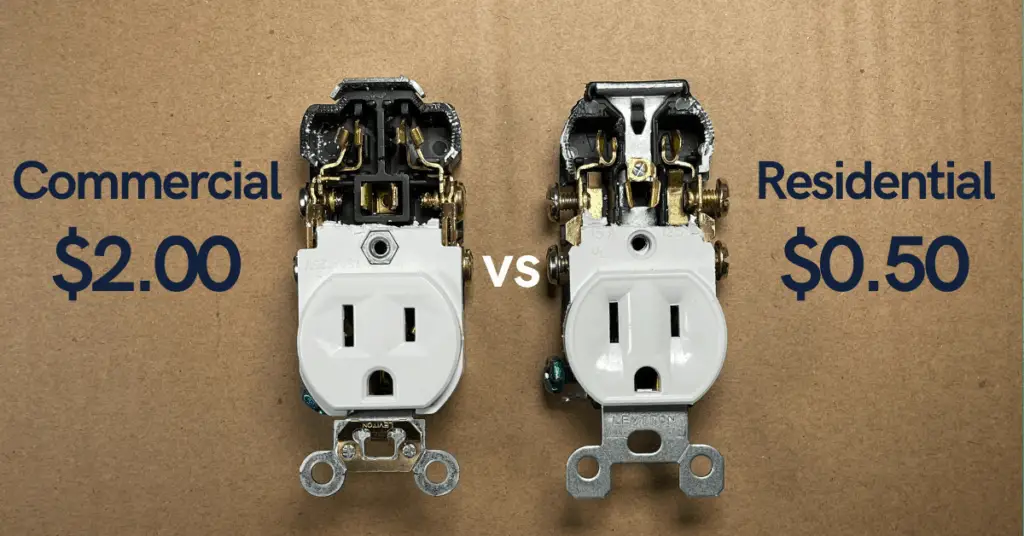
The residential non-tamper resistant Leviton 5320 outlet, is about $0.50, whereas the residential tamper-resistant is approximately $1.00.
The commercial non-tamper resistant Leviton CBR15 outlet is about $2.00, whereas the commercial tamper-resistant is approximately $3.25.
Note – It should be noted that you most likely will need to buy the tamper-resistant version to meet NEC code adoption.
So if you go with the non-tamper-resistant commercial-grade outlet, the difference in price from the residential outlet will be an additional $1.50 per location in material cost to your project.
If selecting the tamper-resistant commercial grade outlet, the difference in price from the residential outlet will be an additional $2.25 per location in material cost to your project.
Weight

Holding the 2 outlets in your hands you can feel the difference with the commercial-grade feeling significantly heavier.
The residential grade outlet weight 47 grams, where as the commercial grade outlet weighted 65 grams.
This makes the residential-grade outlet 38% lighter than the commercial-grade outlet.
As supported by the pictures in the following sections this weight difference is mostly driven by the commercial-grade outlet design using thicker materials for almost all components.
Structural Design
For the residential-grade outlet, I have seen failures in the past where the top housing (white) and bottom housing (black) separate and break apart.
That is probably because the yoke runs between the two housings, carrying any loads between the top and bottom housings. So if you apply any sort of torsion or force is applied to the yoke, that would increase the chance of separation between the two housings.
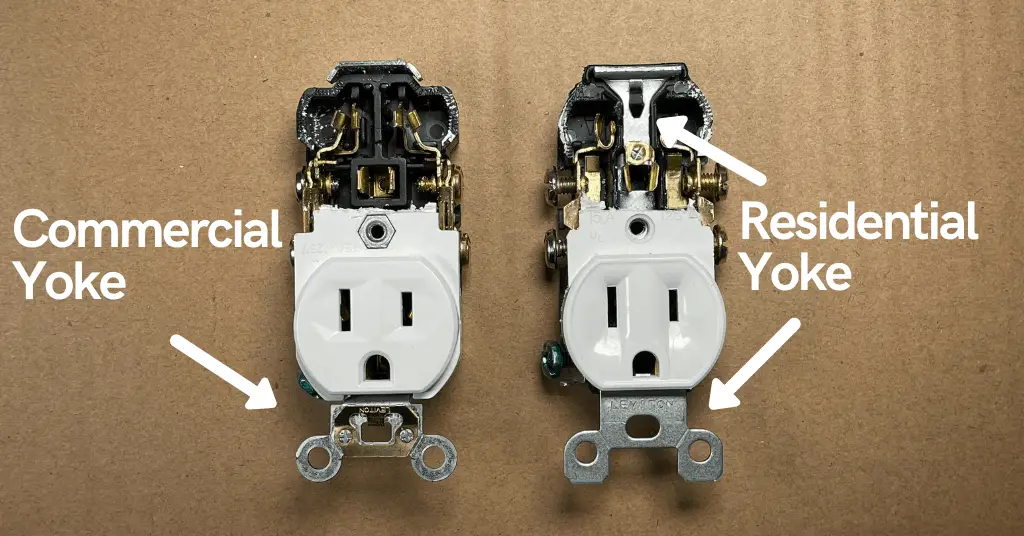
In contrast, the commercial carries the load through a yoke design that runs on the outside of the housings.
This means that the commercial-grade should have a lower chance of failure with separation between the two housings.
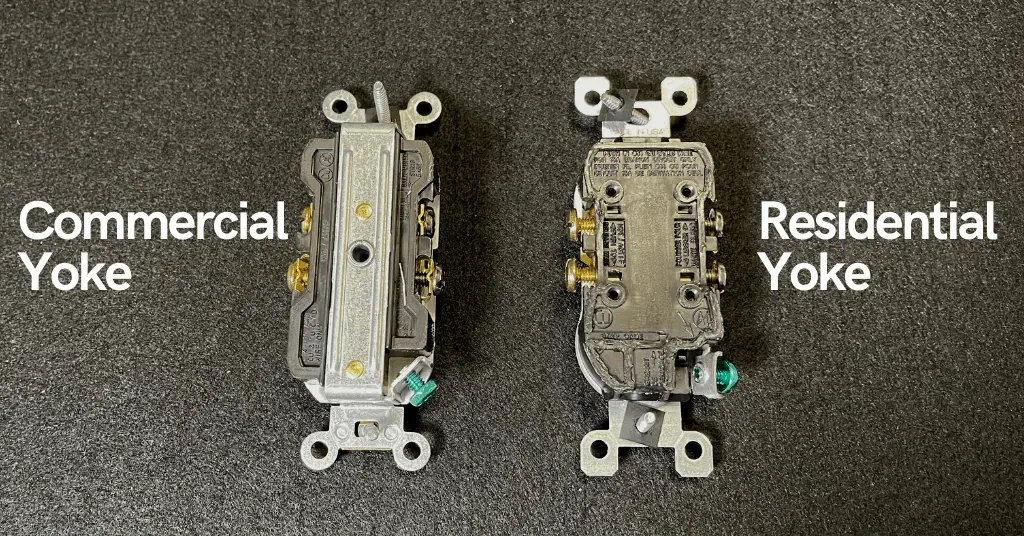
Safety
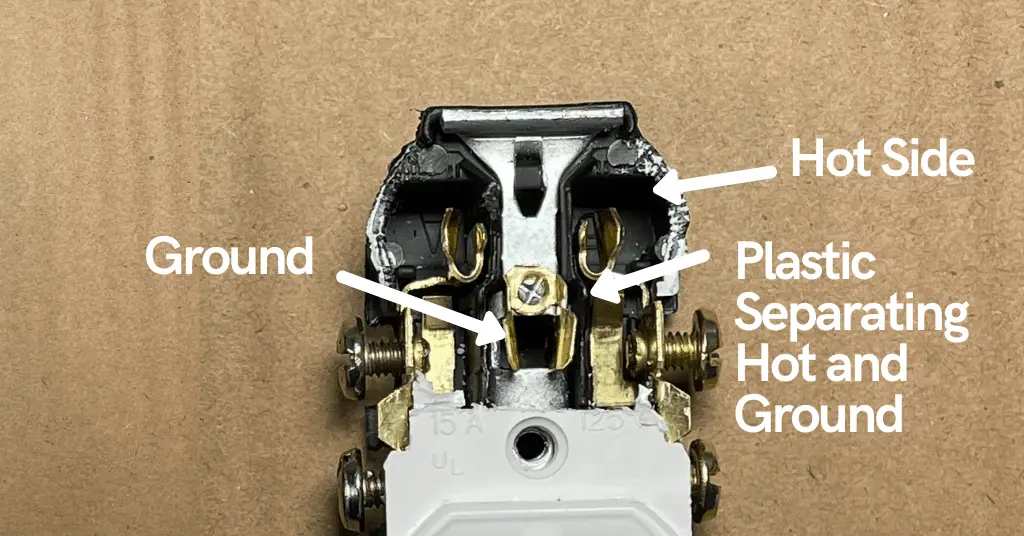
In the past, when using the Residential Leviton 5320 outlet I have experienced internal ground faults that resulted in arcing and discoloring in the white outlet housing.
From what I saw when I opened the two outlets, this could be due to the hot side being only separated from the ground by a thin piece of black plastic. If this plastic were to fail a path opens up internally for a ground fault.
Whereas, with the commercial outlet the plastic separating the hot from the ground is significantly thicker. Furthermore, the ground is going through yet another piece of thick plastic and back to the external yoke.
So, in terms of clearances or separation between the hot side, ground, or neutral; the commercial outlet has much better internal clearances and separation.

Internal Design

Another difference between the residential-grade Leviton 5320 outlet, and the commercial-grade Leviton CBR15 outlet, is the shape and design of the bus connectors.
In the residential-grade outlet the connectors are in a “u” shape.
If the outlet is commonly plugged into an appliance with a high current draw, like a heater, or it is frequently used; this “u” shape can deform over time leading to loose-fitting plugs.
Most of us have experienced this when trying to plug a 2-prong phone charger in at a hotel outlet that has been used for the vacuum cleaner. Often the outlet might be so worn out that the plug simply falls out without being touched.
In contrast, the commercial-grade outlet has a totally different design. Two separate plates make up the bus bar providing a more secure hold.
This design should hold up better over time and not be as prone to deformation after frequent use as the residential-grade design.
Push Pins

DON’T USE THEM! At least this is my feedback and the consensus from hundreds of comments on my YouTube video. Even the manufacturer will note these are a one-time use connection.
The residential outlet has four push pins for 14-gauge wire at the back of the outlet.
In my “how to wire an outlet” video, at 3:17 minutes I discuss these pins and the reason they are unsafe in more depth.
The commercial-grade outlet does not have the options for push pins, so no room for error!
The commercial-grade outlet does have a plate design at each screw terminal which will allow you to connect the wire without making a “shepherd’s hook” around each of the screws also called back wiring. This could save you time during the installation, and is a better design compared to the push pins on the residential-grade.
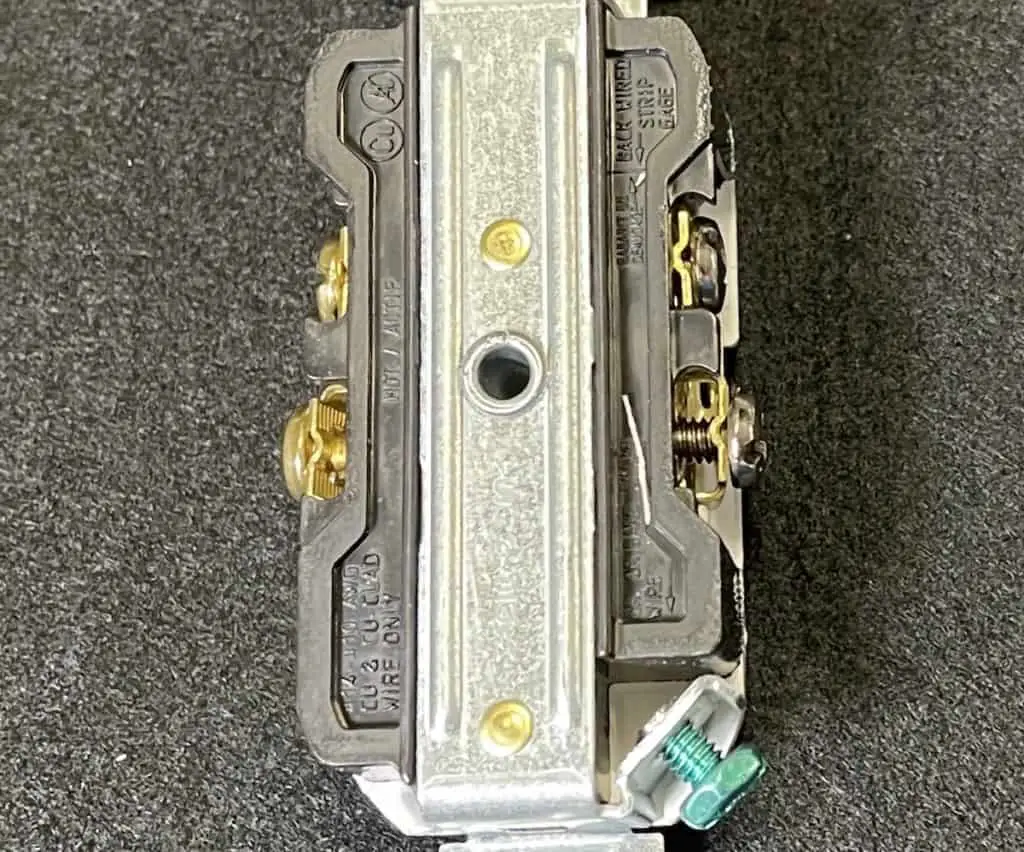
Conclusion
In my opinion, the commercial Leviton CBR15 outlet is safer and more robust, therefore worth the extra $1.50. I will definitely be switching to the commercial-grade on my future projects.
The two main points that sold me on it are:
- The reduced chance of internal failures with the commercial outlet; and
- The design of the bus bar. I like the idea of being able to pull plugs in and out without worrying about that u shape deforming.
If you are a weekend warrior like myself, Subscribe to my youtube channel. I have many videos to help you around the house with your repairs and improvements.




